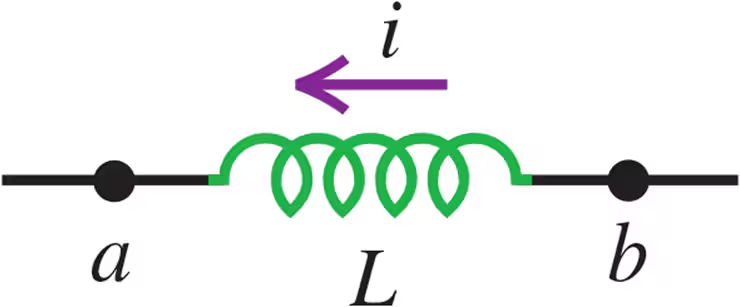 Back
BackProblem 1a
Two coils have mutual inductance M = 3.25 × 10-4 H. The current i1 in the first coil increases at a uniform rate of 830 A/s. What is the magnitude of the induced emf in the second coil? Is it constant?
Problem 7a
A 2.50-mH toroidal solenoid has an average radius of 6.00 cm and a cross-sectional area of 2.00 cm2. How many coils does it have? (Make the same assumption as in Example 30.3.)
Problem 9a
At the instant when the current in an inductor is increasing at a rate of 0.0640 A/s, the magnitude of the self-induced emf is 0.0160 V. What is the inductance of the inductor?
Problem 9b
At the instant when the current in an inductor is increasing at a rate of 0.0640 A/s, the magnitude of the self-induced emf is 0.0160 V. If the inductor is a solenoid with 400 turns, what is the average magnetic flux through each turn when the current is 0.720 A?
Problem 10
When the current in a toroidal solenoid is changing at a rate of 0.0260 A/s, the magnitude of the induced emf is 12.6 mV. When the current equals 1.40 A, the average flux through each turn of the solenoid is 0.00285 Wb. How many turns does the solenoid have?
Problem 12a
The inductor shown in Fig. E30.11 has inductance 0.260 H and carries a current in the direction shown. The current is changing at a constant rate. The potential between points a and b is Vab = 1.04 V, with point a at higher potential. Is the current increasing or decreasing?
Problem 13a
A toroidal solenoid has mean radius 12.0 cm and crosssectional area 0.600 cm2. How many turns does the solenoid have if its inductance is 0.100 mH?
Problem 14
A long, straight solenoid has 800 turns. When the current in the solenoid is 2.90 A, the average flux through each turn of the solenoid is 3.25 × 10-3 Wb. What must be the magnitude of the rate of change of the current in order for the self-induced emf to equal 6.20 mV?
Problem 15b
Inductance of a Solenoid. A metallic laboratory spring is typically 5.00 cm long and 0.150 cm in diameter and has 50 coils. If you connect such a spring in an electric circuit, how much self-inductance must you include for it if you model it as an ideal solenoid?
Problem 17
An air-filled toroidal solenoid has a mean radius of 15.0 cm and a cross-sectional area of 5.00 cm2. When the current is 12.0 A, the energy stored is 0.390 J. How many turns does the winding have?
Problem 19c
A solenoid 25.0 cm long and with a cross-sectional area of 0.500 cm2 contains 400 turns of wire and carries a current of 80.0 A. Calculate: the total energy contained in the coil's magnetic field (assume the field is uniform);
Problem 20a
It has been proposed to use large inductors as energy storage devices. How much electrical energy is converted to light and thermal energy by a 150 W light bulb in one day?
Problem 20b
It has been proposed to use large inductors as energy storage devices. If the amount of energy calculated in part is stored in an inductor in which the current is 80.0 A, what is the inductance?
Problem 38a
An L-R-C series circuit has L = 0.600 H and C = 3.00 mF. Calculate the angular frequency of oscillation for the circuit when R = 0.
Problem 38b
An L-R-C series circuit has L = 0.600 H and C = 3.00 mF. What value of R gives critical damping?
Problem 39a
An L-R-C series circuit has L = 0.450 H, C = 2.50 × 10-5 F, and resistance R. What is the angular frequency of the circuit when R = 0?
Problem 39b
An L-R-C series circuit has L = 0.450 H, C = 2.50 × 10-5 F, and resistance R. What value must R have to give a 5.0% decrease in angular frequency compared to the value calculated in part (a)?

